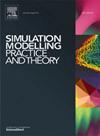比较区块链和DAG技术在智能农业可追溯性方面的效率和延迟
IF 3.5
2区 计算机科学
Q2 COMPUTER SCIENCE, INTERDISCIPLINARY APPLICATIONS
引用次数: 0
摘要
分布式账本技术(DLT),如比特币、以太坊和有向无环图(DAG),通过实现安全、分散和透明的可追溯系统,被定位为智能农业的一个有前途的解决方案。然而,这些技术在物联网环境中面临着与可扩展性、延迟和效率相关的挑战。在本研究中,我们通过广泛的模拟、不同的交易生成率和网络延迟,对比特币、以太坊和DAG技术进行了比较分析。本研究的一个关键方法创新是对农业数据交易的详细编纂,包括作物类型、施肥、收获和运输等参数,使数据表示的结构化和可扩展方法成为可能。我们的研究结果表明,比特币的鲁棒性受到其对延迟和网络负载的高敏感性的阻碍,包含时间超过700秒。以太坊表现出更好的适应性,在不同条件下,其控制的包含时间从12.91秒到35.76秒不等。DAG优于这两种方法,其包含时间在4.27到22.25秒之间,显著降低,突出了其对实时应用的适用性。据我们所知,这是第一项在农业可追溯性背景下对这些技术进行直接比较的研究,展示了基于dag的系统在管理和扩展农业物联网网络方面的优势和局限性。本文章由计算机程序翻译,如有差异,请以英文原文为准。
Comparing blockchain and DAG technologies for smart agriculture traceability in terms of efficiency and latency
Distributed Ledger Technologies (DLT), such as Bitcoin, Ethereum, and Directed Acyclic Graphs (DAG), are being positioned as a promising solution for smart agriculture by enabling secure, decentralized, and transparent traceability systems. However, these technologies face challenges related to scalability, latency, and efficiency in IoT environments. In this study, we conduct a comparative analysis of Bitcoin, Ethereum, and DAG technologies through extensive simulations, varying transaction generation rates and network latencies. A key methodological innovation of this research is the detailed codification of agricultural data transactions, encompassing parameters such as crop type, fertilization, harvesting, and transportation, enabling a structured and scalable approach to data representation. Our results reveal that Bitcoin's robustness is hindered by its high sensitivity to latency and network load, with inclusion times exceeding 700 s. Ethereum demonstrates better adaptability, with controlled inclusion times ranging from 12.91 to 35.76 s under varying conditions. DAG outperforms both, achieving significantly lower inclusion times between 4.27 and 22.25 s, highlighting its suitability for real-time applications. To the best of our knowledge, this is the first study to provide a direct comparison of these technologies in the context of agricultural traceability, showcasing the advantages and limitations of DAG-based systems for managing and scaling agricultural IoT networks.
求助全文
通过发布文献求助,成功后即可免费获取论文全文。
去求助
来源期刊

Simulation Modelling Practice and Theory
工程技术-计算机:跨学科应用
CiteScore
9.80
自引率
4.80%
发文量
142
审稿时长
21 days
期刊介绍:
The journal Simulation Modelling Practice and Theory provides a forum for original, high-quality papers dealing with any aspect of systems simulation and modelling.
The journal aims at being a reference and a powerful tool to all those professionally active and/or interested in the methods and applications of simulation. Submitted papers will be peer reviewed and must significantly contribute to modelling and simulation in general or use modelling and simulation in application areas.
Paper submission is solicited on:
• theoretical aspects of modelling and simulation including formal modelling, model-checking, random number generators, sensitivity analysis, variance reduction techniques, experimental design, meta-modelling, methods and algorithms for validation and verification, selection and comparison procedures etc.;
• methodology and application of modelling and simulation in any area, including computer systems, networks, real-time and embedded systems, mobile and intelligent agents, manufacturing and transportation systems, management, engineering, biomedical engineering, economics, ecology and environment, education, transaction handling, etc.;
• simulation languages and environments including those, specific to distributed computing, grid computing, high performance computers or computer networks, etc.;
• distributed and real-time simulation, simulation interoperability;
• tools for high performance computing simulation, including dedicated architectures and parallel computing.
 求助内容:
求助内容: 应助结果提醒方式:
应助结果提醒方式:


